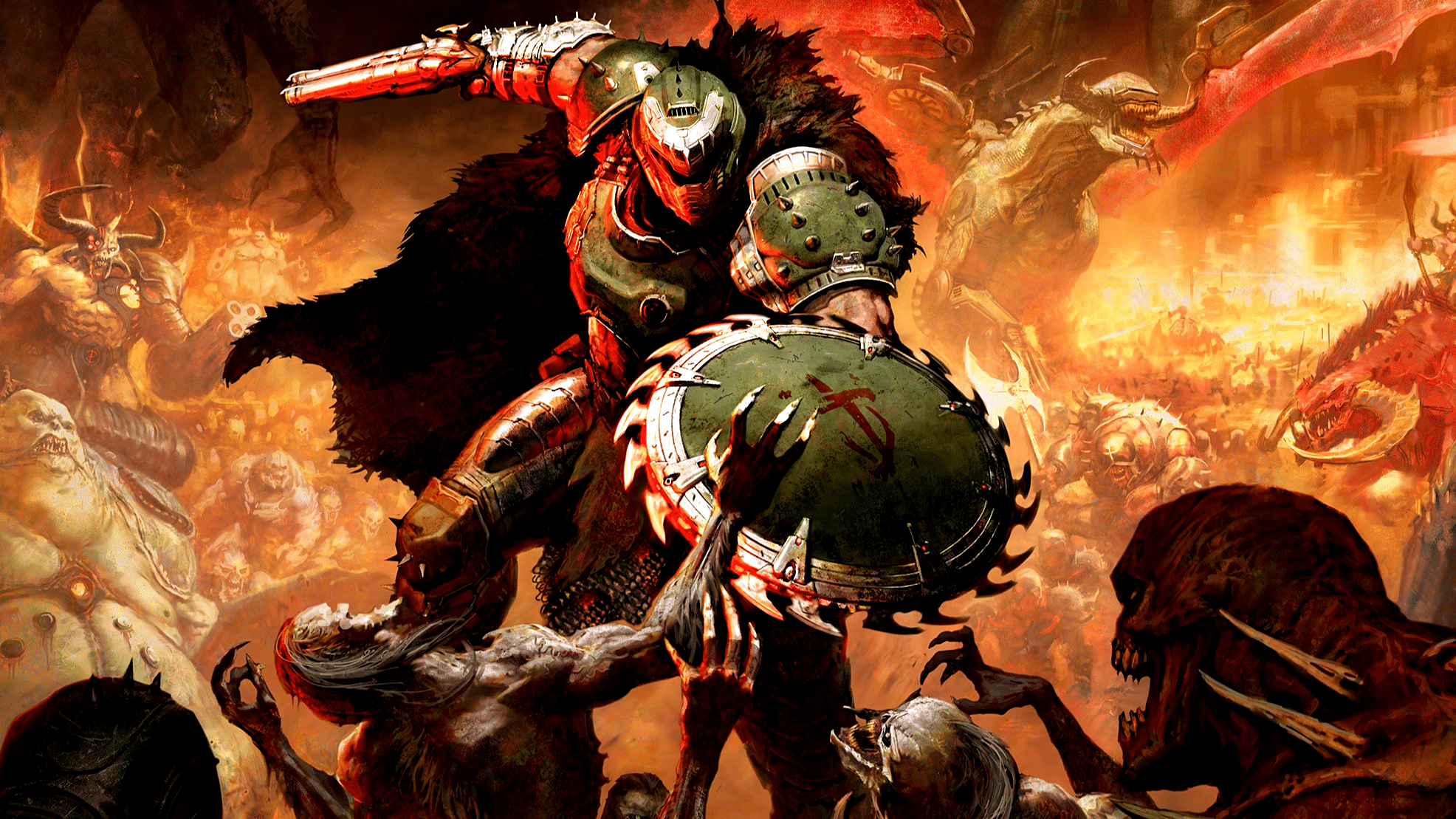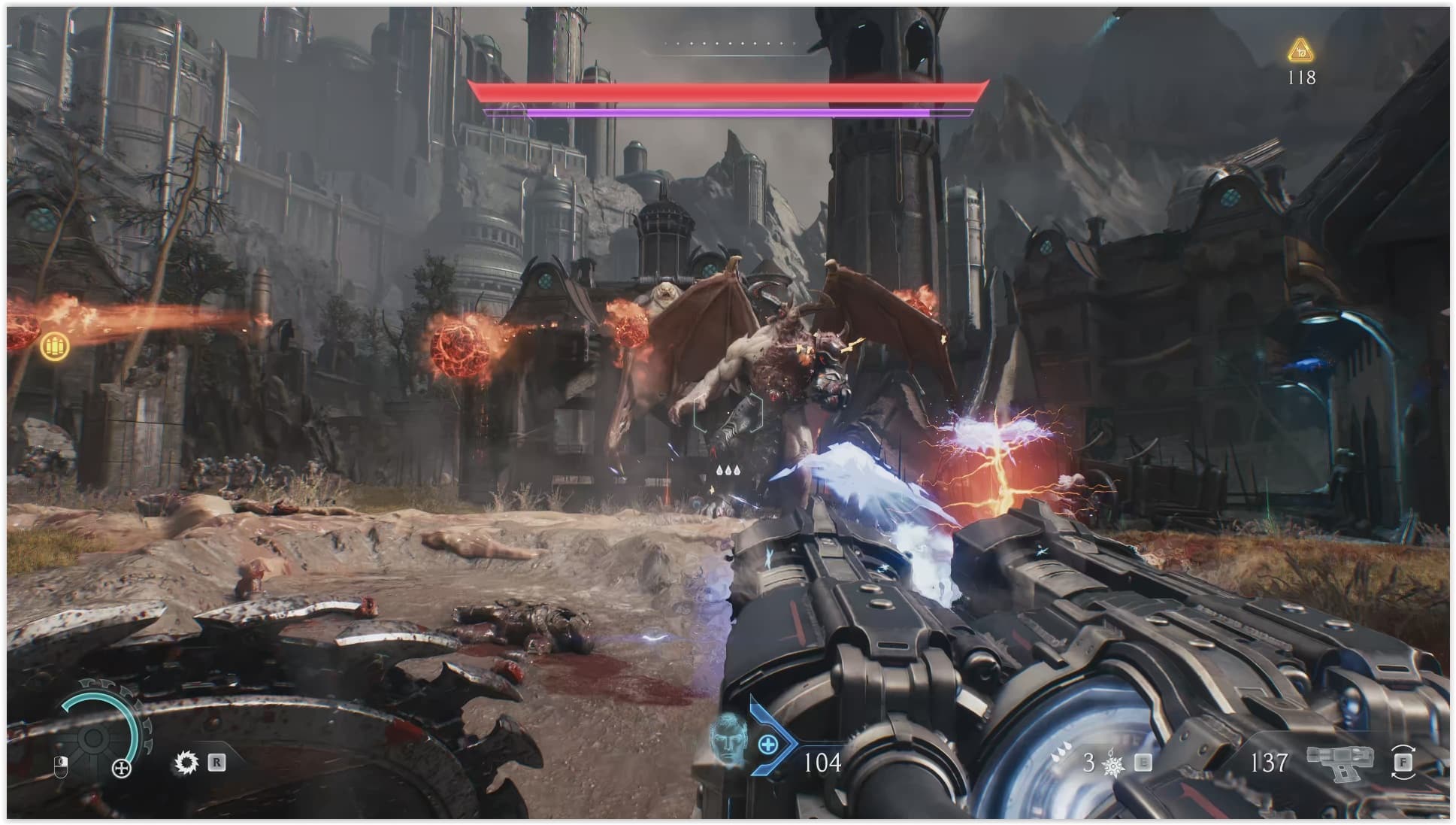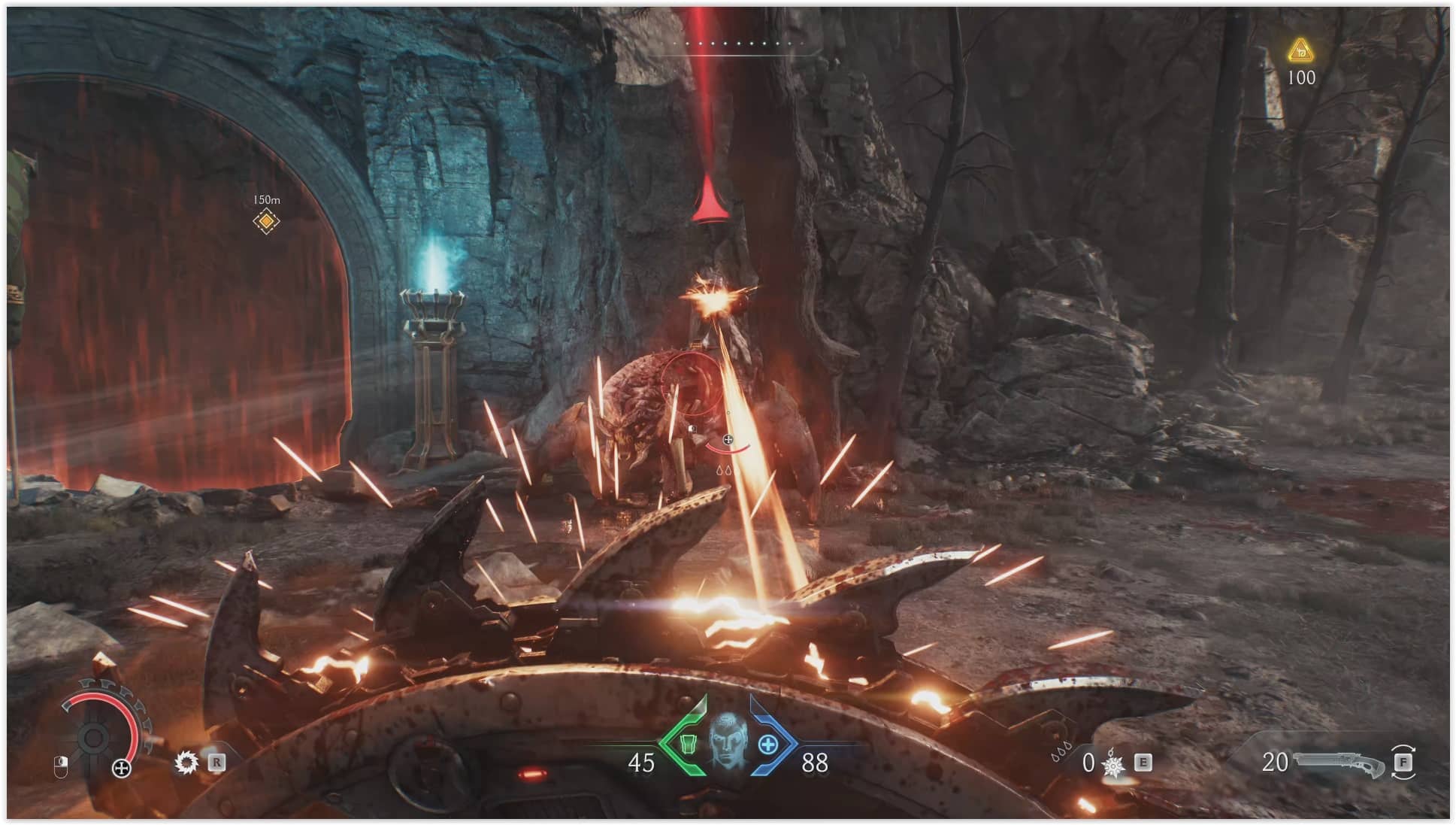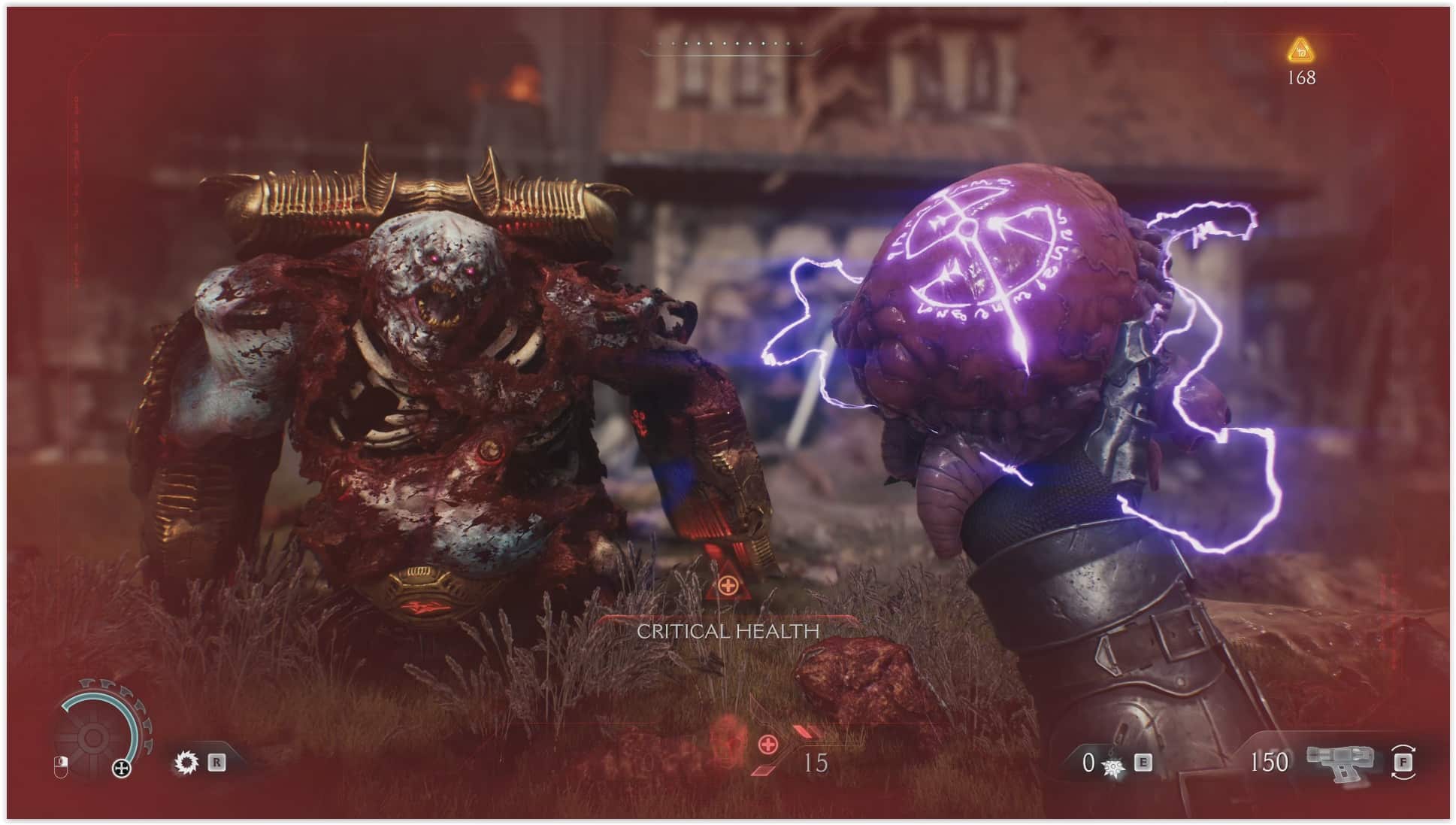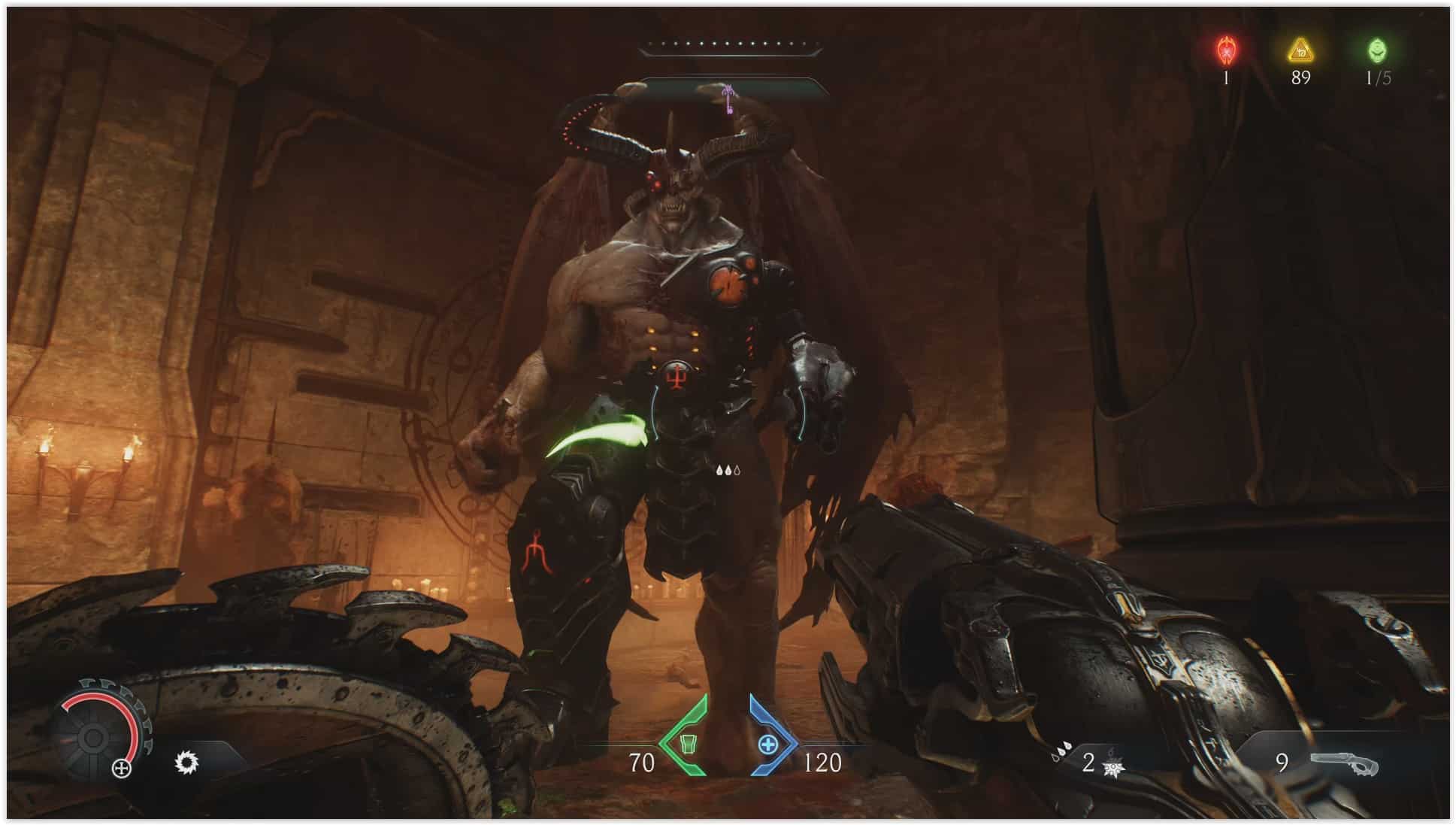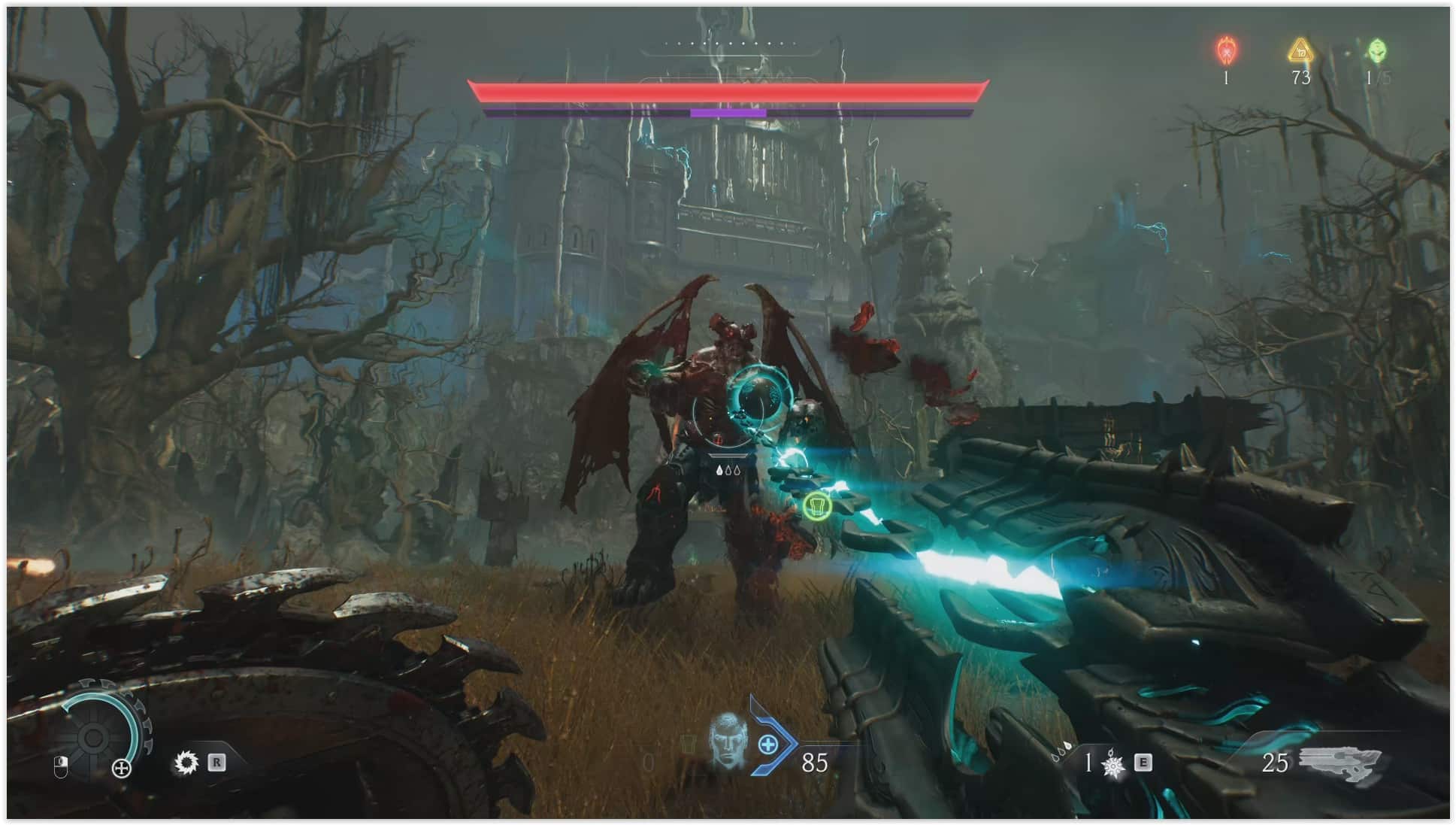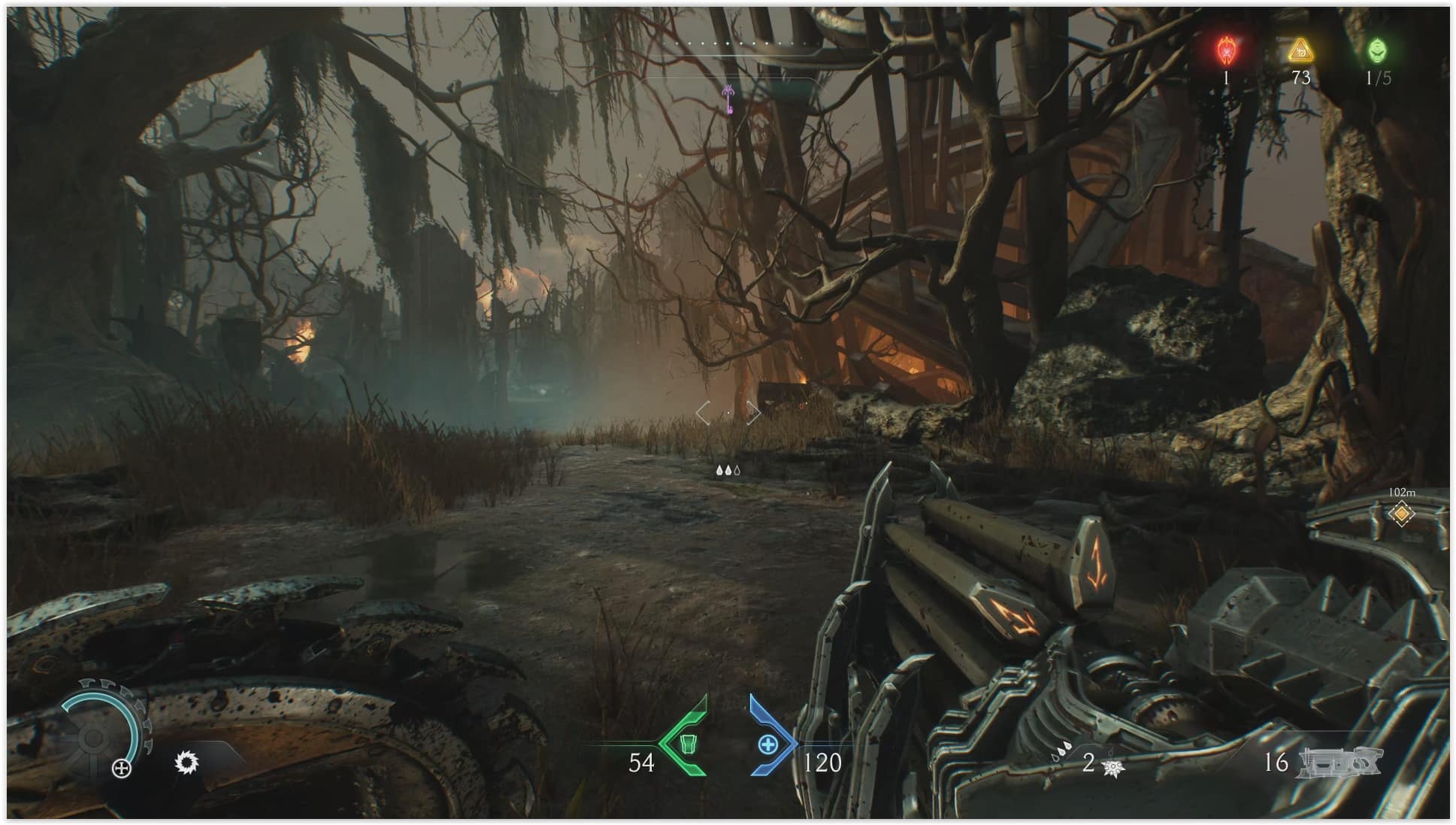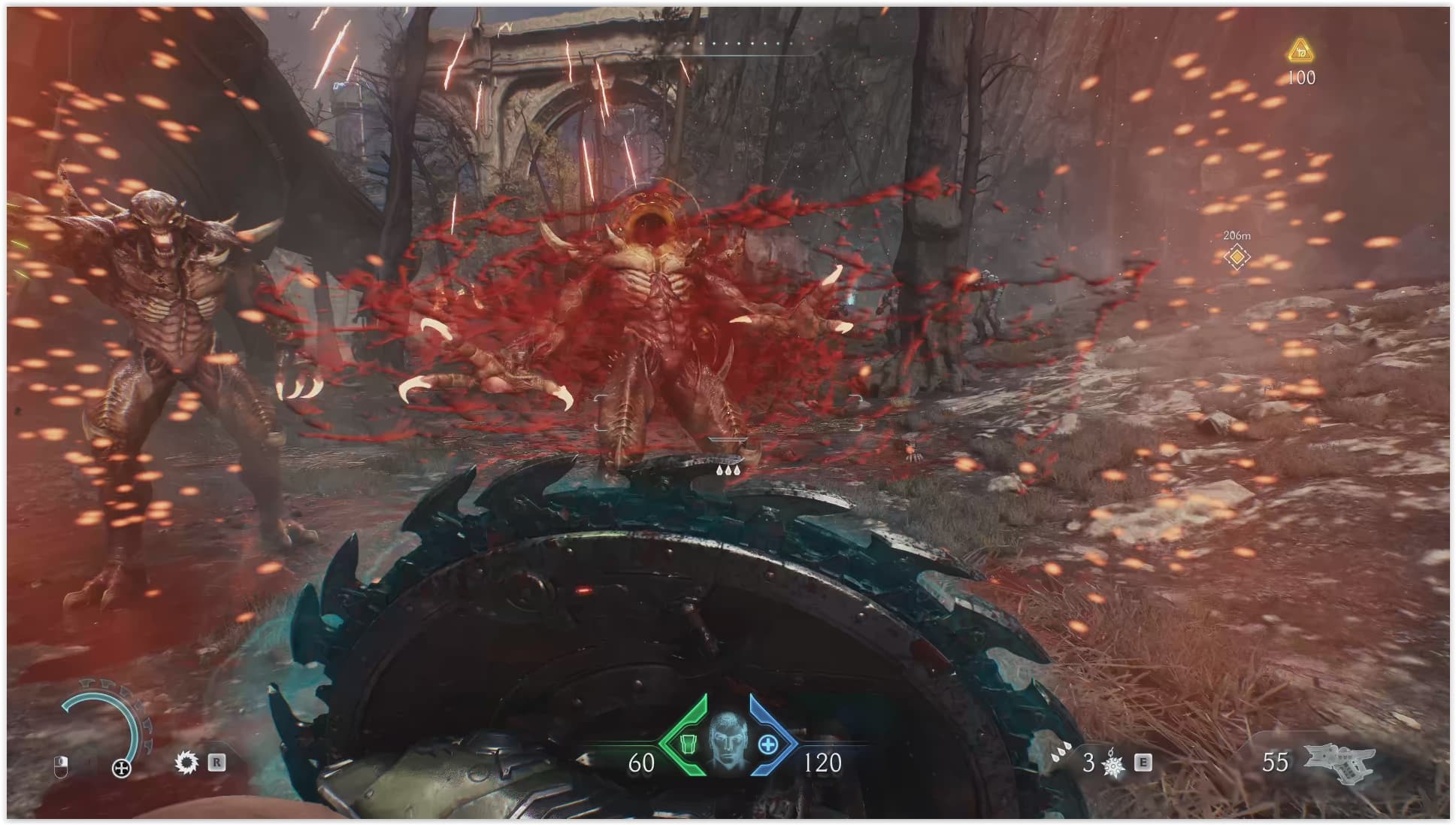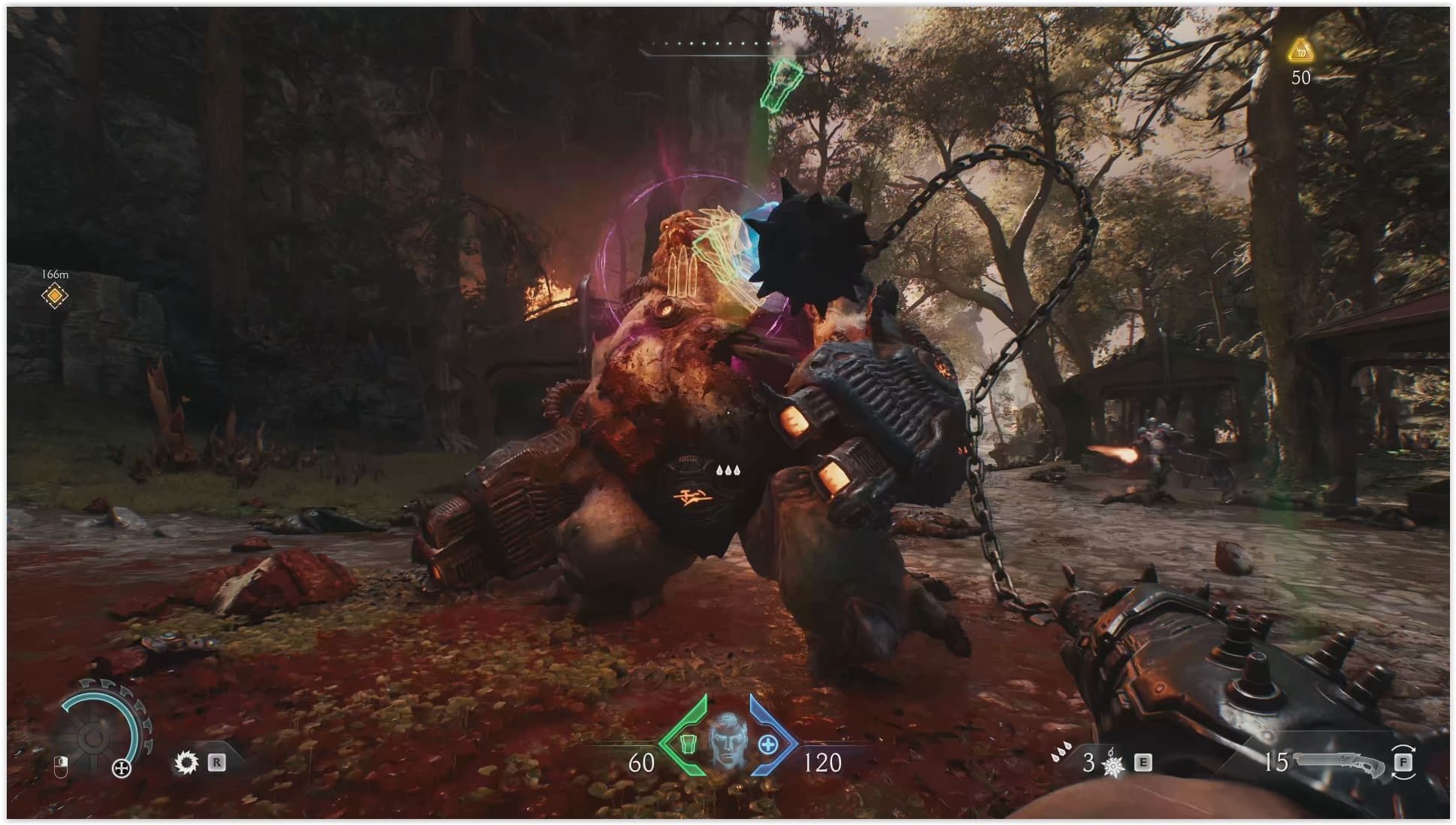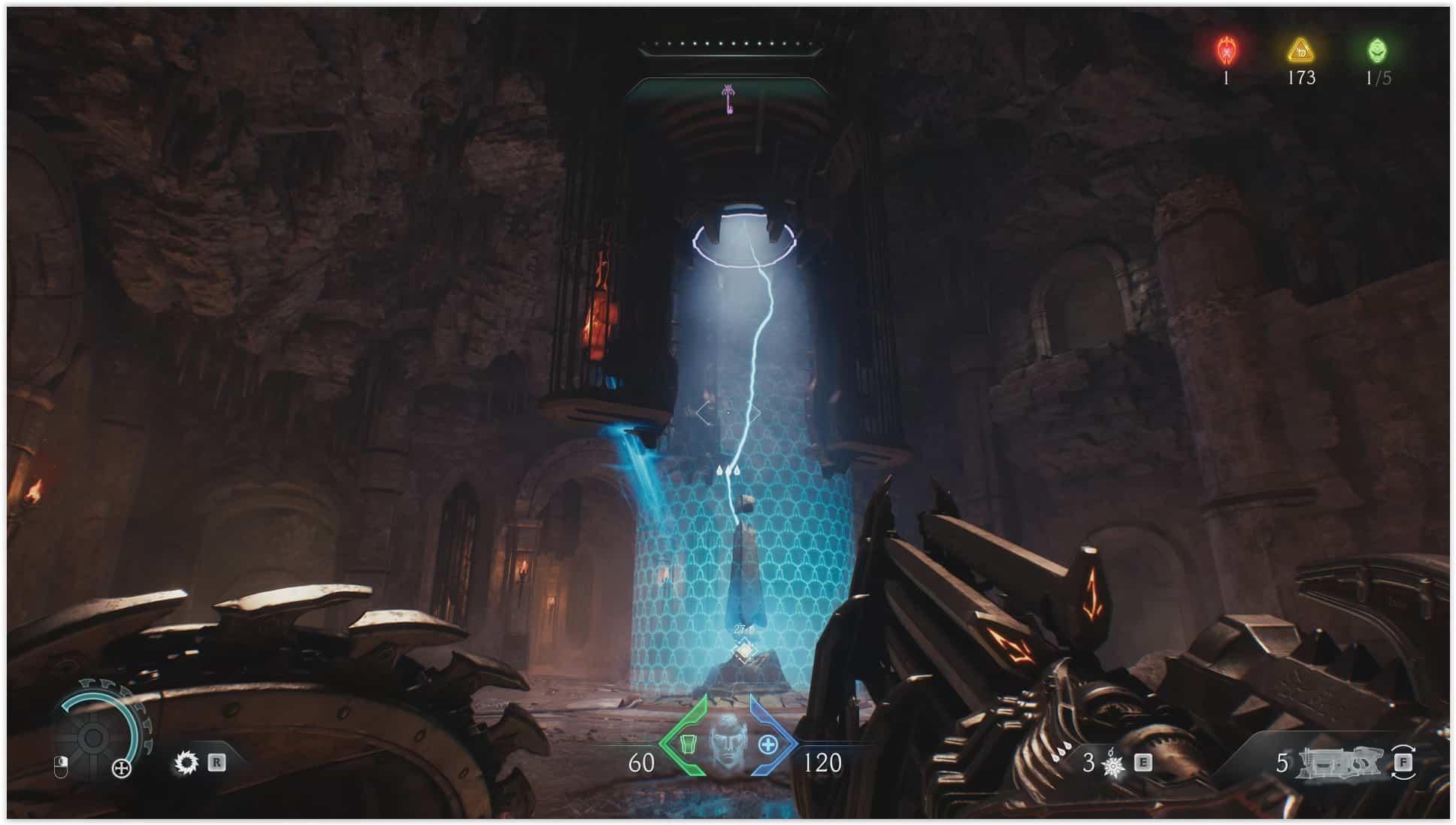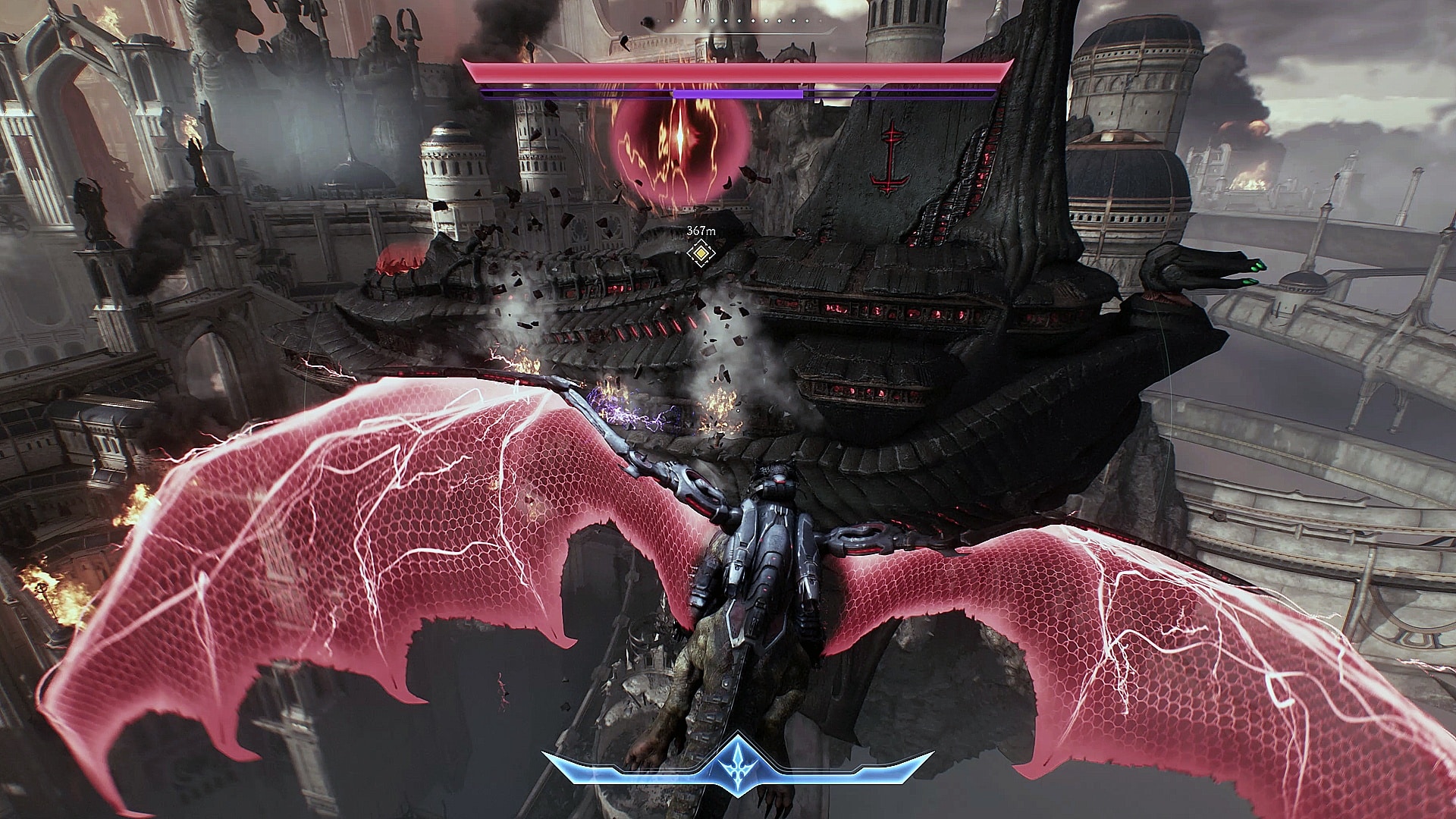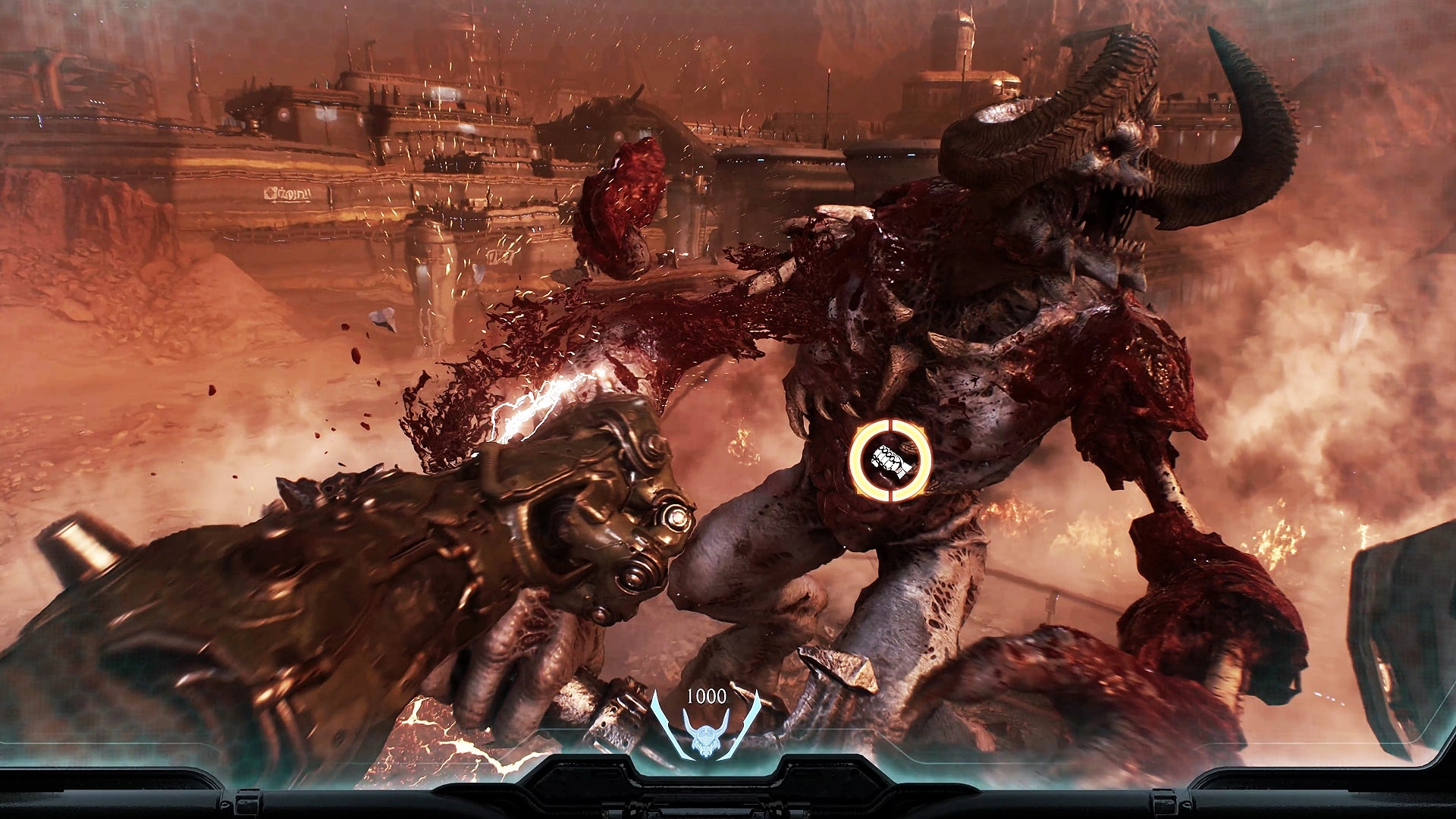Doom: The Dark Ages plays unusually complex – but then it clicked and Bethesda almost had to pull me away from the monitor.
It was tricky to completely relearn Doom. How can the father of all genres suddenly feel so unfamiliar?
But one thing is also certain: after my first few hours in Doom: The Dark Ages, I never want to go back! That’s because the 2025 shooter legend is making a fundamental change of direction that is almost unprecedented in the series’ history.
The only comparable turnaround was in 2004, when Doom 3 shifted the focus to horror elements and took its foot off the gas pedal to do so.
But what exactly is changing this time and is it worth fans getting used to it? I’ve slaughtered my way through four levels and I’ll deliver the answer.
In addition, melee combat is now an integral part of the core concept and no longer an occasional mechanic. Don’t worry: it doesn’t replace gunplay But there is still a noticeable shift that adds a whole new dimension to combat.
All in all, it’s no longer pure speed that counts in The Dark Ages, but rather timing: which weapon, maneuver or attack do I use to best master the current situation? However, this means getting to grips with the new mechanics first – because there is a lot to understand and learn in the new Doom.
My new sidekick, the shield
The centerpiece of most of the new systems is the (incidentally, just awesome) circular saw shield that the Slayer always carries in his left hand, complementing the familiar firearm in the right corner. Essentially, the shield serves four essential functions in combat:
- Block:When I hold down the right mouse button, I can use the shield to block frontal damage up to a certain amount (both melee and ranged attacks).
- Parry:; if I press the block button at the right moment, I can parry certain attacks (and thus reflect projectiles or stagger opponents).
- Rush:; I can target enemies while in the block and then smash into them – this causes damage and quickly covers distances.
- Throw:; Pressing R allows me to hurl the shield, either shattering armor or stunning enemies as the saw digs into them.
The shield is therefore not just a defensive tool, but the new all-rounder in the Slayer’s arsenal and absolutely crucial in almost every single fight.
If, for example, an Arachnotron takes me under fire from a distance with its cannon, I can first block its shots, then dash towards it and immediately force it into close combat (which is disadvantageous for it).
Which brings us to the second important tool: the morning star!
From the medieval weapons cabinet
Unlike in its predecessors, close-quarters combat is no longer limited to glory kills, or pre-calculated finishing moves. Instead, I use weapons like the morning star from our press demo freely in combat – and even unleash devastating combos.
The morning star is one of several close-quarters combat options that the Slayer takes on in Doom: The Dark Ages over the course of the campaign. I can thrash the demon spawn with the gigantic steel ball up to three times in a row before I have to collect new charges or wait for the cooldown.
In combination with the shield abilities, after a little practice I was even able to turn small groups of enemies into hellish goulash without firing a shot! But the real showstopper comes when I’ve done enough damage to medium and large demons to make them stagger, inviting me with a purple glow to deliver the triumphant killing blow.
Not only does it do a lot of damage, but it also feels pretty darn cool: When I use my flail to catapult a demonic horseman from his horned mount with a metallic “donk!” and then finish off the beast with a broadside from my double-barreled shotgun, causing its ammunition and armor to rain down on me, I am, for a moment, the most powerful badass tramping through the shooter landscape.
Incidentally, all of this now takes place in real time and no longer interrupts my flow during combat with a predefined animation. This means I am always in control and the already brutal fights feel even more immediate.
Doom is stupid? No way!
That’s not to say that I can just rush in blindly and hammer the melee button to win in the new Doom! On the contrary: since the enemies have adapted to the Slayer’s new skills, there are constant tactical decisions to make.
The zombie soldiers, for example, now appear with shields and form a phalanx that I cannot penetrate with normal firearms. After a few hits, however, the shields start to glow – the signal for me to throw my saw shield! And with a thunder, the whole group of demons is blown to pieces.
A new variation of imps, on the other hand, is completely immune to shield throws due to their stone skin, so the only option here is pure firepower. This, in turn, does nothing against the thick shell of the new demonic battle tanks – but if I parry their projectiles with the right timing, they will blow up with just one hit.
Certain mini-bosses even have a second line of defense in addition to their armor: a demon with morale can only be killed once I’ve reduced its morale bar to zero by taking out enough of its lesser minions. This multi-step process can quickly get tricky because the mini-boss is also firing bullets at me.
“The true power of your firearms is unleashed only through the shield and close combat,” explains Hugo Martin from the developer id. ‘It’s all about the right interaction.’
As you can see, in Doom: The Dark Ages, you need to think on your feet, even in the heat of the moment. All the new tools need to be combined correctly and our opponents read correctly, otherwise my campaign will quickly end in the quicksave menu.
Pure heavy metal
Doom: The Dark Ages uses these building blocks to create a whole new combat dynamic, but still manages to retain the identity of the series and the brand.
This is how the actual shooting, after all the core of the Doom brand since 1993, now feels better than ever: With UVX And all of this takes place in front of a medieval backdrop that could have come straight from a death metal album cover. Only id can do it this well.
The bass-heavy sound of the arsenal, the heavy thumping steps of the slayer and the juicy hit feedback, in which demons sometimes lose one or two body parts, put the infernal crown on the whole thing.
A nice side effect of the more down-to-earth gameplay: strafing, i.e. dodging projectiles with A and D, plays a much more important role again and takes me back to the days of the original Doom games in a pleasant way. If Eternal was a little too much flight simulation for you, you’ll definitely welcome the comeback to strategic movements in the horizontal.
A dash of sandbox A mix of classic elements and modernity also awaits us in the level design. While many passages are largely linear, the locations in Doom: The Dark Ages regularly open up into small mini-open worlds, somewhat comparable to Metro Exodus. In my demo, for example, I was able to reenact a major demon siege on the Sentinel homeworld of Argent D’Nur, visiting a forest, small settlements, scattered dungeons, and a swamp to my heart’s content.
Of course, this is in no way comparable to a GTA, but still offers an unusual amount of freedom for a Doom game. If I don’t feel like exploring, I can just follow the marker of the main quest, but then I’ll miss optional bosses, hidden dungeons and hidden treasure chests with gold and upgrade points.
And the latter can be particularly important on the higher difficulty levels, because I unlock new abilities for weapons, shields and even the morning star at special shrines for collecting gold, runes and other resources.
I can even specialize and use powerful synergies: an upgrade during my session caused projectiles from my nail gun to detonate as soon as they hit the saw shield – a devastating combination for anyone who likes to use the shield as a projectile.
Game Director Hugo Martin summarizes:
Melee, shields and firearms form a single unit, and switching between them should feel fluid and natural. You can exploit weak points with your shield, gather resources with melee combat, and do damage with your guns. And the skill tree then deepens the whole thing.
D-Day in Doom
The fights are broken up by…small switch puzzles, although the shield is often used as an aid here too, for example to cut the chains of trap doors. The jump sequences from Eternal, which many fans found annoying, seem to be a thing of the past – at least there was no trace of the 2020 platforming influences in my test run.
I was particularly impressed by the varied and atmospheric environments, with which id Software creates a fantastic feeling of being right in the middle of the action: While I take out monsters, titans as tall as houses wrestle with each other in the background and siege cannons make the ground tremble.
Doom: The Dark Ages presents a surprisingly dense battlefield atmosphere through such details and less gives the impression that I’m just moving from one arena fight to the next.
Even small script sequences fit in perfectly – for example, when I fend off the floods of demons on a beach littered with wrecks using an attached machine gun. It’s kind of like the famous scene from D-Day. Whereby the D now stands for “dark fantasy”.
Story? Hell, yeah!
This also fits with id Software’s new story focus, because the story is no longer told via the usual codex text panels, but in cutscenes and real dialogue This makes characters and factions such as the Maykr race, the Deag Order, or King Novik more tangible and interesting than in the predecessors.
Since the storyline tells the story of the Doom Slayer, prior knowledge is not absolutely necessary. I don’t want to explain what it’s about in more detail for spoiler reasons – but this much can be revealed: It finally comes out why the Slayer let himself be used as a super weapon for the Argenta in the first place.
With so much focus on the story, it seems only logical to do without any multiplayer component: “We are concentrating fully on the single player , no distractions. This allows us to create the most extensive Doom campaign to date, the large sandbox levels, a fully-fledged story and our biggest hordes of enemies yet,” says Hugo Martin of id Software.
Change of perspective with obstacles
As outstanding as all this may sound, I still have two complaints after my four hours with Doom: The Dark Ages. And these are, of all things, two features that are heavily advertised in the trailers! We are talking about the Vehikel-Passagen at the wheel of a huge Atlan mech and on the back of a cyber dragon.
Yes, these sections look pretty cool and yes, for many fans this is a dream come true – especially after we’ve seen the giant battle mechs in Doom for several years but never controlled them ourselves. But ultimately, these sections feel a bit like a gimmick, especially in comparison to the rest of the game.
Because the flying scenes give me a sense of freedom, but ultimately I’m just flying from checkpoint to checkpoint, shooting at static turrets at certain points.
In combat mode, I also lose almost all mobility (except for a dash to evade) and thus exactly what would have made a fight on the back of a dragon special. Instead, the battles feel frustratingly cumbersome and like glorified quicktime events In any case, dynamic dogfights look different.
My experiences as an Atlan pilot were similar. Of course, it’s incredibly cool at first that I can suddenly crush a Mancubus demon like an ant under my heel. But here, too, the fighting is mostly limited to a stubborn (and cumbersome) parry, slash, shoot, and repeat.
With the multi-layered and carefully balanced gameplay on foot, this cannot be kept up with by any stretch of the imagination – and not with the fantastic switching between mech and pilot gameplay from Titanfall 2, which set correspondingly high standards nine years ago.
Ultimately, this raises the suspicion that id Software was looking for options to break up the flow of the game and create variety. In this respect, I hope that either a lot more is done in terms of variety and fine-tuning the controls, or that the frequency of the vehicle sections is kept within limits. Otherwise, these passages could perhaps tarnish the absolutely outstanding overall impression of The Dark Ages a little.
The editorial team’s conclusion
The combat in Doom: The Dark Ages feels like a puzzle to me that I have to solve. This requires a little patience in the first few minutes and the willingness to get to grips with the new mechanics (especially the shield). But as soon as it clicks, a phenomenal flow unfolds. And then this Doom gives me the feeling of being an absolutely unstoppable fighting machine.
I take turns to deal out with Shotgun and Mace, sawing demons with the shield, throwing projectiles back to the sender. This rhythm is complemented by an upgrade system, the depth of which I can only begin to guess after a handful of levels. At the end of my visit, Bethesda had to kindly but firmly remove me from the PC. I could have played forever.
I also have to mention the almost endless options in the menu: never before have I been able to customize Doom so much down to the smallest detail. There are even sliders for individual damage values, game speed and color saturation of the game world, and you can even deactivate the entire HUD. So if you like it particularly immersive, you can also do without flashing icons and glowing enemies.

